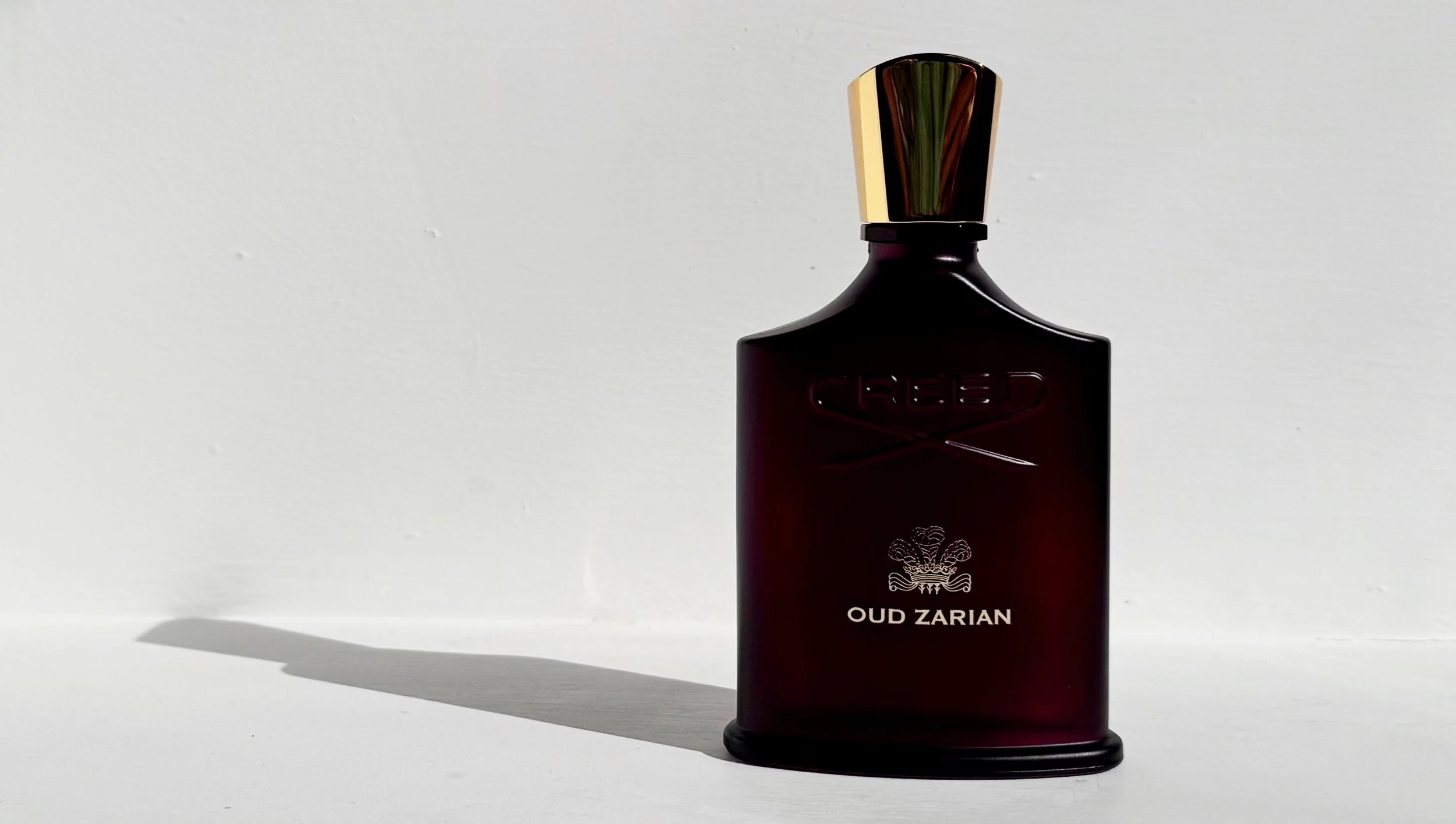Jo's Scent Notes: Creed Oud Zarian
Now, don’t run a mile from this fragrance review because it’s got the word ‘oud’ in the name. I probably would have done, if we weren’t introduced over a glass of very nice champagne and delicious canapés at an intime get-together in the beautiful private shopping area above Creed’s boutique in Quadrant Arcade, off Piccadilly. (Such are the trials of a perfume writer’s life, I’m afraid.)
Most ouds, or oudhs (depending on your spelling preference) are powerful, divisive, room-rocker-y. They’re basically a fragrance category in their own right. Walk through a mall in Dubai, or even Harrods’s fragrance hall, and you’re enfolded in an oudh-y miasma. It tends to be used more in masculine fragrances than feminine – or at least, in more overdosed quantities.
So just what is this mythical ingredient? A staple of Arabic perfumery for centuries, and a key element in incense across India, Arabia and Japan, oudh – a.k.a. agarwood – is actually the resinous heartwood of an evergreen tree, usually the Aquilaria species. The agarwood happens when the tree is infected with a fungus, turning over a period of years from a usually pale and light wood into something that is dark, resinous – and beloved by perfumers, after it’s been extracted, when it becomes earthy, bittersweet, woody (and in small quantities, can be really quite aphrodisiac). It never ceased to amaze me that at some point, as with all these bizarre ingredients, someone thought: ‘Oooh, I wonder what that rotten wood would smell like on my skin…?’ But they did, and thus, oudh was born as a fragrance note.
Now, Oud Zarian (created by the almost namesake perfumer, Cécile Zarokian) certainly has all the famous tenacity you’d expect of an oudh – and then some, as I’ll explain. But Creed – a fabled French perfume brand, descended from fine tailors who were based on London’s Conduit Street – have used an 80-year-old aged Jalali oudh, here, from South Asia. This is the perfume equivalent of drinking a Chateau Lafite Rothschild that was laid down by your grandfather, and oh, is it absolutely bloody gorgeous.
It isn’t at all what I was expecting. The oud-iness is truly subtle, more like a backbone that holds it all up. Rather, I get armfuls of roses, softness, almost a sweetness and a lot – a LOT – of incense. There is apparently liquorice in there, and tonka, ginger, sandalwood and bergamot, but the resins (frankincense and myrrh) are what really make themselves known on my skin, along with those Centifolia (Grasse) roses. And I love, love, love incense.
Surprisingly, Oud Zarian becomes warm and soft, not punchy and invasive, yet – here’s the weird thing – it is unbelievably, record-breakingly long-lasting. As well as getting a LOT of ‘ooooh, you smell lovely’ comments from strangers when I’ve been wearing it since that little soirée (and one from my husband, which is the clincher), I am aware of smelling it on myself eight or more hours later. And that’s a really weird and rather wonderful phenomenon, because generally, when you spray a fragrance on yourself, you swiftly become nose-blind to it. On clothes, it’s a slightly different matter; that always seems to make them more present, in my experience, but here, I was noticing it eight, nine, even 10 hours after I’d applied it. A first. A delightful first.
So… now I have to apologise for the fact that this fragrance is fiendishly expensive, as fragrances go. Probably the priciest I’ve ever reviewed. Sorreeeee. But if you can’t buy it, I still really, really want you to smell it – it’s already in Harrods and Creed’s own boutiques, and will launch at Creed’s other stockists on 2nd September. Cast any prejudices aside, and try it on your skin because I think will change how you think about oudh forever.
And just like that, I now have an oudh fragrance in my wardrobe. Honestly, who’d have thunk it?
£350 for 50ml eau de parfum – buy here


